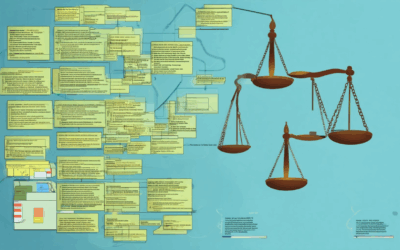Nonprofit program development is a cornerstone of achieving meaningful societal impact, enabling organizations to address pressing community needs, foster collaboration, and drive lasting change. As the backbone of nonprofit operations, effective program development ensures resources are allocated strategically, goals are aligned with mission objectives, and interventions are designed to deliver measurable outcomes. This comprehensive guide delves into the critical components, strategies, and best practices that power successful nonprofit program development, offering insights into overcoming challenges, leveraging data-driven approaches, and building sustainable structures for long-term impact.
Key Takeaways
- Overcome Resource Constraints: Develop creative strategies to address funding, staffing, and technological limitations for sustainable program implementation.
- Clarify Your Mission and Vision: Ensure programs align with your nonprofit’s core goals to drive focused and impactful outcomes.
- Engage Communities: Conduct regular needs assessments to design initiatives that truly meet community needs and preferences.
- Diversify Funding Sources: Explore multiple revenue streams, including grants, sponsorships, and donations, to enhance program sustainability.
- Set SMART Goals: Establish specific, measurable, achievable, relevant, and time-bound objectives to guide program success.
- Build Strategic Partnerships: Collaborate with other nonprofits, government agencies, and businesses to amplify impact and resource availability.
- Evaluate and Adapt Regularly: Use data-driven insights and community feedback to continuously improve and adjust programs as needed.
- Involve Stakeholders: Engage board members, volunteers, and community leaders to ensure diverse perspectives and broader program resonance.
- Leverage Technology: Utilize digital tools to enhance program efficiency, outreach, and monitoring capabilities.
- Measure Impact Clearly: Implement robust evaluation processes to demonstrate program outcomes and secure future support.
- Stay Adaptable: Adjust programs swiftly to evolving needs and trends to maintain relevance and effectiveness.
- Simplify Reporting: Develop transparent communication frameworks to maintain trust with funders and stakeholders.

Key Components of Successful Nonprofit Program Development
The success of nonprofit program development relies on several critical components working in harmony. Here’s a breakdown of what makes these initiatives thrive:
- Align with Mission and Goals
- Ensure programs directly support the organization’s core mission.
- Involve key stakeholders in planning to maintain relevance and impact.
- Measure outcomes against predefined objectives tied to the mission.
- Set Clear and Measurable Objectives
- Define specific, achievable goals for each program.
- Use SMART criteria (Specific, Measurable, Achievable, Relevant, Time-bound).
- Regularly assess progress to stay on track.
- Foster Strategic Partnerships
- Collaborate with like-minded organizations to pool resources and expertise.
- Form alliances with local businesses, governments, or other nonprofits.
- Leverage partnerships to amplify reach and impact.
- Secure Sustainable Funding
- Diversify revenue streams through donations, grants, and sponsorships.
- Build relationships with foundations and corporate partners.
- Implement fundraising strategies that ensure long-term financial stability.
- Evaluate and Iterate Continuously
- Conduct regular assessments to measure program effectiveness.
- Use data-driven insights to refine strategies and improve outcomes.
- Be willing to adapt programs based on feedback and changing needs.
- Strong Leadership and Governance
- Have a dedicated team with expertise in program management.
- Maintain effective board governance to guide strategic decisions.
- Ensure transparent accountability to build trust with donors and stakeholders.
- Innovative Approaches
- Stay updated on emerging trends and technologies in the sector.
- Pilot new ideas to address unique challenges faced by the community.
- Encourage creative solutions that maximize program impact.
- Community Engagement and Advocacy
- Build strong relationships with program participants and beneficiaries.
- Engage the community in advocacy efforts to drive social change.
- Use storytelling and case studies to showcase program successes.
Key Strategies for Effective Nonprofit Program Development
Here are the key strategies for developing and implementing successful nonprofit programs:
- Research and Data-Driven Decision Making
Conduct thorough research to identify the needs of your target audience and align your programs with those needs. Utilize data analytics to measure outcomes and ensure your initiatives are impactful. This approach helps in securing funding and demonstrating value to stakeholders. - Collaboration and Partnerships
Partner with other nonprofits, governments, corporations, and community organizations to pool resources and expertise. Collaborative efforts can amplify your reach and efficiency, allowing you to address complex issues more effectively. - Evaluation and Feedback Loops
Regularly evaluate the effectiveness of your programs through surveys, impact assessments, and measurable goals. Use feedback from beneficiaries, volunteers, and partners to refine and improve your approaches. Continuous learning and adaptation are crucial for long-term success. - Innovation and Adaptability
Stay open to trying new approaches and technologies. Innovate by leveraging digital tools, social media, and creative solutions to engage your audience and deliver programs in innovative ways. Adapting to changing circumstances ensures your programs remain relevant and effective. - Fundraising and Resource Mobilization
Develop diverse funding strategies, including grants, donations, and corporate sponsorships. Build relationships with donors and investors to sustain your programs. Effective fundraising ensures the continuity and scaling of your initiatives. - Capacity Building and Organizational Development
Invest in training your staff and volunteers to enhance their skills and knowledge. Foster a culture of learning and continuous improvement within your organization. Strong organizational capacity enables better program delivery and long-term sustainability.
By integrating these strategies, nonprofits can develop and implement programs that not only meet immediate needs but also drive lasting positive change in their communities. For further insights and resources on nonprofit program development, explore our dedicated guides and tools at NPO Expert .

Key Steps for Designing Effective Nonprofit Programs
Designing effective nonprofit programs requires a strategic approach that aligns with your organization’s mission while addressing the needs of your target audience. Below are the key steps to ensure your programs are impactful and achieve their intended goals:
- Define Your Core Mission and Vision
- Identify Your Target Audience
- Set Measurable and Time-Bound Goals
- Engage Key Stakeholders
- Develop a Comprehensive Program Strategy
- Evaluate Program Outcomes Regularly
- Secure Diverse Funding Sources
- Amplify Impact Through Storytelling
Start by clearly articulating your nonprofit’s mission and vision. This serves as the foundation for all program development efforts, ensuring that every initiative aligns with your organization’s broader goals.
Understand who you are trying to reach with your programs. Conduct research or surveys to gather insights about your audience’s demographics, preferences, and challenges. This helps in tailoring your programs to meet their specific needs.
Establish clear, specific, and achievable objectives for your programs. These goals should be measurable, time-bound, and aligned with your mission. Whether it’s increasing donations, reducing poverty, or enhancing community engagement, having defined goals is crucial for tracking progress.
Collaborate with board members, volunteers, donors, and other stakeholders to gain their input and support. Their involvement can provide valuable perspectives and help in refining your program strategies.
Create a detailed plan that outlines the activities, timelines, and resources required to execute your programs. This strategy should also identify potential partnerships with other nonprofits, businesses, or community organizations that can contribute to the success of your initiatives.
Conduct regular assessments to measure the impact of your programs. Use data collection tools to track key performance indicators (KPIs) and adjust your strategies based on the results. This iterative process ensures that your programs continue to meet their intended goals and evolve over time.
Explore various funding opportunities to sustain your programs. This may include grants, corporate sponsorships, individual donations, and event proceeds. Diversifying your revenue streams can enhance the program’s sustainability.
Effectively communicate the stories and successes of your programs to inspire others and attract more support. Sharing testimonials, case studies, and success stories can help in building momentum and attracting additional donors and volunteers.
By following these steps, you can design and implement nonprofit programs that are not only impactful but also aligned with your organization’s long-term goals. For further resources and tools to enhance your program design, visit NPO Expert .

Common Challenges in Developing Effective Nonprofit Programs
When it comes to designing and implementing successful nonprofit programs, several challenges often arise. Understanding these obstacles can help organizations better plan and execute impactful initiatives.
- Limited Resources: Many nonprofits face constraints in terms of funding, staffing, and technology. These resource limitations can hinder program planning and execution.
- Funding Issues: Securing adequate financial support is a constant challenge. Nonprofits may rely on donations, grants, or sponsorships, which can be unpredictable and difficult to secure consistently.
- Measuring Impact: Evaluating the success of nonprofit programs can be tricky. Without clear metrics or tools, it’s hard to assess whether programs are making a meaningful difference.
- Volunteer Retention: Attracting and retaining qualified volunteers is crucial, yet many nonprofits struggle with volunteer turnover due to burnout or lack of engagement opportunities.
- Regulatory Compliance: Navigating laws and regulations related to nonprofit operations can be complex and time-consuming, requiring ongoing effort and attention to detail.
- Community Engagement: Building strong relationships with stakeholders, including donors, partners, and beneficiaries, is essential for program success. Without active community involvement, efforts may fall short of their potential.
- Program Scaling: As a nonprofit grows, scaling its programs to meet increased demand while maintaining quality can be challenging. This requires careful planning and resource allocation.
- Adaptability: Nonprofits operate in dynamic environments, and the ability to quickly adapt programs to changing needs, preferences, and market conditions is crucial for long-term success.
For further reading on overcoming these challenges, explore our comprehensive guides on Nonprofit Program Management and Fundraising Strategies .
Essential Elements of Successful Nonprofit Program Development
To effectively develop and implement successful programs for your nonprofit organization, consider the following key elements:
- Clear Mission and Vision
- Ensure your program aligns with your organization’s core mission and vision.
- Communicate the program’s objectives clearly to stakeholders and participants.
- Community Input and Needs Assessment
- Engage with the community to understand their specific needs and preferences.
- Conduct regular needs assessments to ensure the program remains relevant and impactful.
- Sustainable Funding Strategies
- Develop diverse funding sources including grants, donations, and sponsorships.
- Explore partnerships with corporations, foundations, and individual donors.
- Measurable Goals and Outcomes
- Set specific, measurable, achievable, relevant, and time-bound (SMART) goals.
- Implement tracking mechanisms to monitor progress and evaluate program effectiveness.
- Effective Partnerships and Collaborations
- Purposefully collaborate with other nonprofits, government agencies, and community organizations.
- Seek expertise and resources through strategic alliances to enhance program delivery.
- Robust Evaluation and Adaptation
- Regularly evaluate program performance using quantitative and qualitative measures.
- Adapt programs based on feedback and changing community needs to maximize impact.
By integrating these elements, your nonprofit can create programs that are not only impactful but also sustainable and aligned with your organizational goals. For further insights, explore resources like the Nonprofit Program Development Handbook and GuideStar ‘s nonprofit resources.

Best Practices for Developing Effective Nonprofit Programs
To effectively develop and implement nonprofit programs, consider the following strategies:
- Define Clear Objectives : Begin by articulating specific, measurable goals aligned with your organization’s mission. This ensures your programs remain focused and impactful.
- Conduct Needs Assessment : Engage with the community to understand their challenges and preferences. This helps in designing programs that truly meet the target audience’s needs.
- Involve Stakeholders : Collaborate with board members, volunteers, and community leaders to gain diverse perspectives and ensure your programs resonate broader audiences.
- Secure Funding Strategically : Explore various funding sources such as grants, sponsorships, and donations. Diversify your revenue streams to strengthen program sustainability.
- Foster Partnerships : Collaborate with other nonprofits, governments, and businesses to pool resources, expertise, and opportunities, amplifying your impact.
- Set Measurable Goals : Define clear outcomes and indicators to track progress. Regularly evaluate program performance and adjust strategies as needed.
- Adapt to Feedback : Continuously seek input from participants, donors, and partners. Use feedback to refine programs and enhance satisfaction.
- Promote Community Engagement : Create opportunities for participants to actively contribute, fostering ownership and commitment to the program’s success.
- Leverage Technology : Utilize digital tools for outreach, monitoring, and reporting to improve efficiency and scalability.
- Measure Impact : Implement robust evaluation processes to demonstrate program outcomes. Share success stories to inspire further support and collaboration.
- Stay Abreast of Trends : Keep abreast of industry developments and best practices to maintain relevance and effectiveness in program delivery.
- Simplify Reporting Requirements : Develop clear reporting frameworks to streamline communication with funders and stakeholders, ensuring transparency and accountability.
By integrating these practices, nonprofit organizations can enhance program effectiveness, secure lasting support, and achieve their mission-driven goals.
For further reading on nonprofit program development, explore resources from NPO Expert and other reputable sources like Charity Navigator and GuideStar . These platforms offer valuable insights and tools tailored for nonprofit leaders.





0 Comments